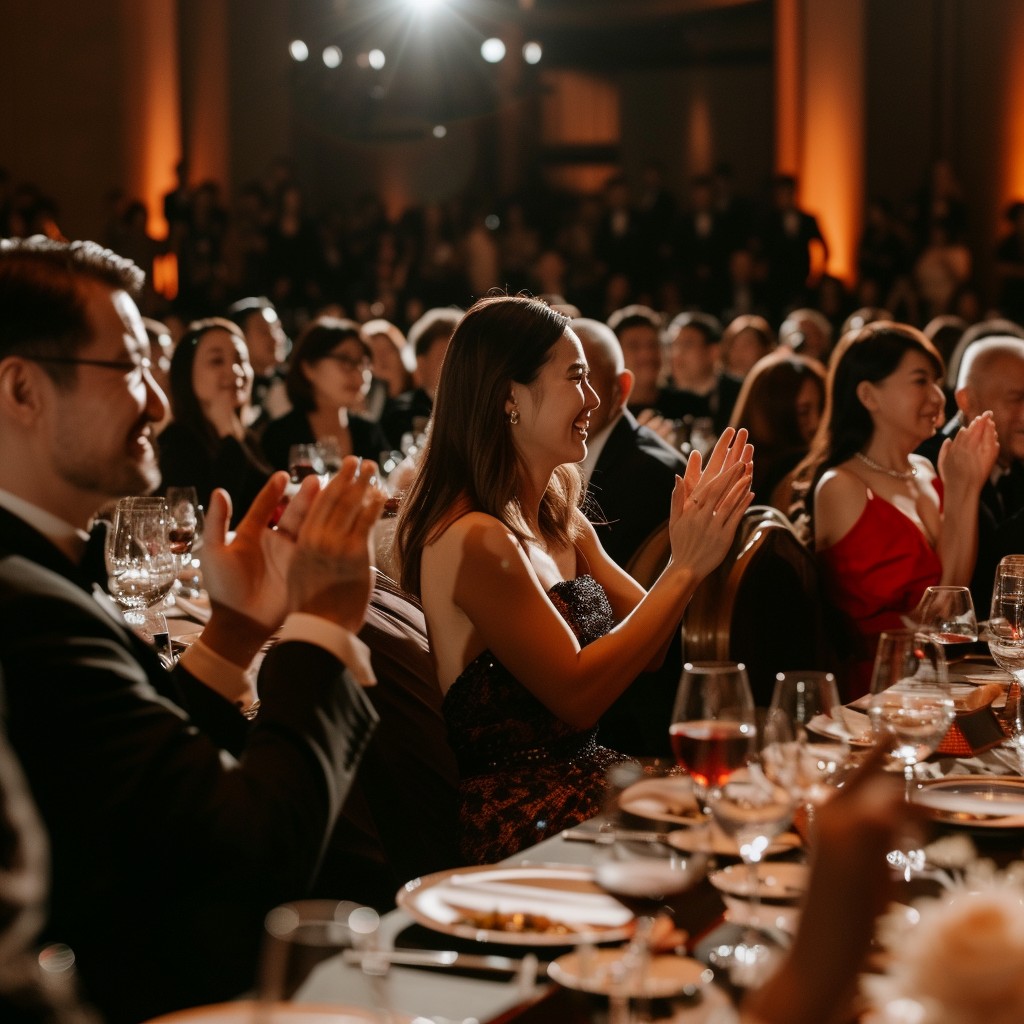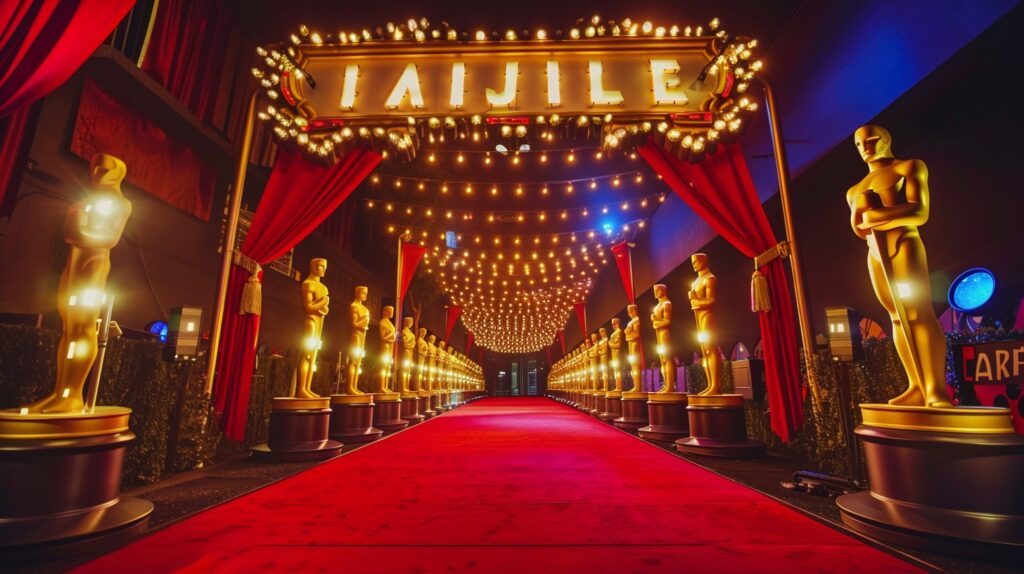
Ever wondered what goes into making a major Film Festivals Behind Scenes or awards show run like a well-oiled machine? From the red carpet to the backstage buzz, there’s a lot more happening behind the scenes than meets the eye.
If you’re curious about how these grand events come together, you’re in the right place! This guide will take you behind the scenes of major film festivals, awards shows, and galas, shedding light on what it takes to pull off these spectacular events.
Common Questions and Concerns
Before diving into the nitty-gritty, let’s address some common questions:
- How do organisers manage such large-scale events?
- What goes into planning a successful gala or awards show?
- Who are the unsung heroes behind these events?
- What are the key challenges faced during these high-profile gatherings?
Understanding the answers to these questions will give you a deeper appreciation for the effort and expertise involved in staging these remarkable events.
The Secret World of Event Planning
The Planning Phase: Where Magic Begins
Months (or even years) of Preparation
Planning for a major event starts long before the red carpet is rolled out. Here’s a glimpse into the process:
- Concept and Vision: It all starts with a vision. Event planners and organisers work closely to define the theme, tone, and overall experience of the event.
- Budgeting: From venue rentals to catering, every detail is meticulously budgeted. This is where the real magic happens, as organisers must balance extravagance with practicality.
- Vendor Coordination: Booking venues, catering, entertainment, and technical services involves negotiating contracts and ensuring every vendor delivers their best.
Concept and Vision
Creating an unforgettable event begins with a clear concept and vision. This stage is crucial as it sets the tone for everything that follows.
Planners brainstorm ideas that align with the event’s purpose, whether it’s celebrating cinematic achievements at a film festival or honouring talent at an awards show.
Example: Imagine the planning team for the Cannes Film Festival. They decide on a theme that reflects the current state of cinema, perhaps focusing on diversity and inclusion. This theme will influence every aspect of the festival, from film selections to panel discussions and promotional materials.
Personal Story: I remember attending a film festival where the buzz in the air was palpable. It wasn’t just the celebrities on the red carpet; it was the tireless team working behind the scenes that made it all happen. From early morning rehearsals to last-minute adjustments, their dedication was truly inspiring.
Budgeting
Budgeting is where creativity meets practicality. Planners must allocate funds wisely, ensuring that every dollar spent contributes to the event’s success without overshooting the budget.
Example: For an awards show like the Oscars, the budget covers everything from the venue and stage setup to security and catering. Each line item is carefully considered, ensuring that the event is both spectacular and financially viable.
Vendor Coordination
Coordinating with vendors is a complex task that requires excellent negotiation and management skills.
From securing the perfect venue to hiring top-notch catering services, every detail matters.
Example: At the Toronto International Film Festival (TIFF), organisers collaborate with local vendors for catering, security, and technical services. This not only supports local businesses but also ensures a smooth and efficient operation.
The Logistics: Piecing Together the Puzzle
Scheduling and Timeline
Creating a detailed schedule is essential for keeping everything on track:
- Timeline Creation: Planners develop a comprehensive timeline that includes every aspect of the event, from initial setup to final cleanup.
- Task Delegation: Each team member is assigned specific responsibilities, ensuring that no detail is overlooked.
- Rehearsals: Regular rehearsals are conducted to iron out any potential issues and ensure everyone knows their role.
Example: For the Sundance Film Festivals Behind Scenes, organisers create a timeline that spans several months, detailing every step from film submissions and selections to marketing and event execution.
Venue Selection and Setup
Choosing the right venue is critical to the success of any event. The venue must align with the event’s theme and accommodate the expected number of attendees.
Example: The Dolby Theatre in Los Angeles is a prime location for the Academy Awards due to its state-of-the-art facilities and seating capacity. The venue setup includes intricate stage designs, lighting, and sound systems to create a captivating experience.
Personal Story: I once had the chance to chat with a production assistant at an awards show. They shared how each small task, like ensuring the microphone was in the right place, was crucial to the success of the event. It was eye-opening to see the precision involved.
The Execution Phase: Bringing It All to Life
Setting the Stage
On the day of the event, the real work begins:
- Venue Setup: Transforming a space to match the event’s vision involves everything from lighting and decorations to seating arrangements and sound checks.
- Run of Show: This is a detailed schedule that outlines every moment of the event, ensuring everything runs smoothly from start to finish.
- Staff Coordination: From ushers to security, everyone has a role to play. Effective communication and coordination are key to handling any hiccups that may arise.
Example: At the Golden Globe Awards, the venue is transformed into a glamorous setting with luxurious décor and elaborate stage designs. Every detail, from the red carpet layout to the seating arrangements, is meticulously planned and executed.
Personal Story: I once had the chance to chat with a production assistant at an awards show. They shared how each small task, like ensuring the microphone was in the right place, was crucial to the success of the event. It was eye-opening to see the precision involved.

The Aftermath: Wrapping It All Up
Post-Event Tasks
Once the event wraps up, the work isn’t over:
- Cleanup: This involves dismantling sets, returning rented items, and ensuring the venue is left in pristine condition.
- Feedback: Collecting feedback from attendees, vendors, and staff helps in assessing the success of the event and planning improvements for the future.
- Media and Publicity: Managing media coverage and public relations to maximise the event’s impact and reach.
Example: After the BAFTA Awards, the organising team reviews feedback from guests, vendors, and staff to identify areas for improvement. This continuous feedback loop helps in refining the event for the following year.
Personal Story: After a high-profile gala, I witnessed the behind-the-scenes team working late into the night to ensure everything was packed up and sorted. Their commitment was a testament to their professionalism and love for what they do.
The Unsung Heroes: Key Roles Behind the Scenes
Event Planners and Coordinators
Event planners and coordinators are the backbone of any major event. They are responsible for orchestrating every detail, from initial concept to final execution.
Example: At the Venice Film Festival, event planners work tirelessly to ensure that every aspect of the festival runs smoothly, from film screenings to panel discussions and networking events.
Technical Crew
The technical crew handles all the audio-visual elements, ensuring that everything from lighting to sound is perfect.
Example: During the Emmy Awards, the technical crew manages complex lighting setups and sound systems to create a visually stunning and immersive experience for both the live audience and television viewers.
Security Personnel
Security personnel ensure the safety and smooth operation of the event, handling everything from crowd control to VIP protection.
Example: At the Berlin International Film Festival, security teams work discreetly to manage crowds and ensure the safety of high-profile attendees, allowing the event to proceed without any hitches.
Volunteers
Volunteers play a crucial role in supporting the event, handling tasks such as ushering guests, distributing programs, and assisting with logistics.
Example: The Sundance Film Festival relies heavily on volunteers to manage various aspects of the event, from ticketing and registration to audience assistance and hospitality services.
Personal Story: I volunteered at a local film festival once, and it was an incredible experience. Seeing the event from a different perspective and contributing to its success was both rewarding and enlightening.
The Challenges of Planning Major Events
Managing Unexpected Issues
No matter how meticulously an event is planned, unexpected issues are bound to arise. Handling these challenges with grace and efficiency is crucial.
Example: During the Cannes Film Festival, unexpected weather changes can disrupt outdoor events. Organisers must have contingency plans in place to manage such situations smoothly.
Balancing Creativity and Practicality
While it’s important to create a memorable and unique event, practicality must always be considered. This balance is key to a successful event.
Example: For the Met Gala, organisers balance creative, extravagant themes with the practical aspects of venue limitations, guest comfort, and logistics.
Ensuring Seamless Coordination
Effective communication and coordination among all team members and vendors are essential to avoid any missteps.
Example: At the Oscars, a seamless coordination between the production team, presenters, performers, and technical crew ensures that the show flows without any hiccups.
Managing High-Profile Guests
Handling high-profile guests requires special attention to detail, from ensuring their comfort and security to managing their schedules and media interactions.
Example: The Golden Globes must accommodate the needs of A-list celebrities, ensuring their experience is enjoyable and hassle-free.
Enhancing the Audience Experience
Creating Memorable Moments
From the red carpet arrivals to the final awards presentation, creating memorable moments for the audience is a primary goal.
Example: At the Grammy Awards, memorable moments like iconic performances and heartfelt acceptance speeches leave a lasting impression on both attendees and viewers.
Engaging the Audience
Engaging the audience through interactive elements, social media, and real-time updates enhances their experience.
Example: The People’s Choice Awards encourage audience engagement by allowing fans to vote for their favourite nominees, making them feel directly involved in the event.
Ensuring Accessibility
Ensuring that the event is accessible to everyone, including those with disabilities, is a key consideration.
Example: The Sundance Film Festivals Behind Scenes provides accessible screenings and venues, ensuring that all attendees can enjoy the event regardless of their physical abilities.
The Role of Technology in Modern Events
Advanced Audio-Visual Technology
Advanced audio-visual technology enhances the overall experience, creating stunning visuals and impeccable sound quality.
Example: The Tony Awards utilise cutting-edge audio-visual technology to create an immersive experience for both the live audience and television viewers.
Social Media Integration
Integrating social media into the event allows for real-time interaction, increasing audience engagement and expanding the event’s reach.
Example: The MTV Video Music Awards actively engage with fans through social media platforms, encouraging live tweeting and sharing behind-the-scenes content.
Virtual and Hybrid Events
In response to the global pandemic, many events have adopted virtual or hybrid formats, allowing for greater accessibility and reach.
Example: The Toronto International Film Festival (TIFF) offered a hybrid format, combining in-person screenings with virtual events to accommodate global audiences.
Personal Story: Attending a virtual film festival during the pandemic allowed me to experience the event from the comfort of my home while still feeling connected to the community of film enthusiasts.
Conclusion
The behind-the-scenes efforts that go into making major Film Festivals Behind Scenes, awards shows, and galas a success are nothing short of extraordinary.
From meticulous planning and seamless coordination to managing unexpected challenges and creating memorable experiences, the art of event planning is a testament to the dedication and expertise of the teams involved.
Personal Story: As a film enthusiast, attending these events has given me a deeper appreciation for the hard work and creativity that go into making them unforgettable. The next time you watch an awards show or attend a film festival, take a moment to acknowledge the unsung heroes behind the scenes who make it all possible.
By understanding the intricacies of event planning and the dedication required, you’ll gain a newfound respect for the magic that happens behind the curtains.
Whether you’re an aspiring event planner or simply a curious observer, this guide provides a comprehensive look at the glitz and glamour that define these iconic events.
Frequently Asked Questions
How are films selected for major festivals?
The selection process for major film festivals is rigorous and competitive. A team of programmers and screeners reviews thousands of submissions, looking for outstanding and innovative works.
They consider factors like storytelling, cinematography, acting, and overall quality. Personal connections and a film’s “hook” can also help it stand out.
Programmers aim to curate a diverse lineup that aligns with the festival’s identity and programming goals.
What goes into planning a large awards show or gala?
Planning a major event like an awards show or gala is an enormous undertaking that typically starts months or even a year in advance.
Key aspects include:
- Securing a suitable venue
- Coordinating celebrity attendees and presenters
- Organising catering and decor
- Arranging for technical production (lighting, sound, etc.)
- Handling media coverage and red carpet logistics
- Managing ticket sales and seating arrangements
Dedicated teams work on each aspect to ensure a seamless and memorable event.
How do festivals handle film exhibition logistics?
Film festivals have specialised teams to manage exhibition logistics. This includes:
- Print traffic: Coordinating the delivery and return of film prints/DCPs
- Theatre management: Overseeing screening venues and schedules
- Projection: Ensuring high-quality playback of films
- DCP creation: Preparing digital cinema packages for exhibition
Careful planning is required to screen hundreds of films across multiple venues over the course of a festival.
What networking opportunities exist at major festivals?
Film Festivals Behind Scenes offer extensive networking opportunities for filmmakers and industry professionals.
These may include:
- Q&A sessions after screenings
- Panel discussions and workshops
- Industry mixers and parties
- One-on-one meetings with distributors or producers
- Talent showcases
Attending festivals can help filmmakers make valuable connections and potentially secure distribution or funding for future projects.
How do festivals balance artistic merit with commercial viability?
Film Festivals Behind Scenes aim to showcase artistically significant works while also attracting audiences and sponsors.
Programmers look for films that are both critically strong and have potential audience appeal.
Some festivals include both arthouse selections and more mainstream crowd-pleasers.
Many also feature industry marketplaces where films can secure distribution deals, balancing artistic and commercial interests.


